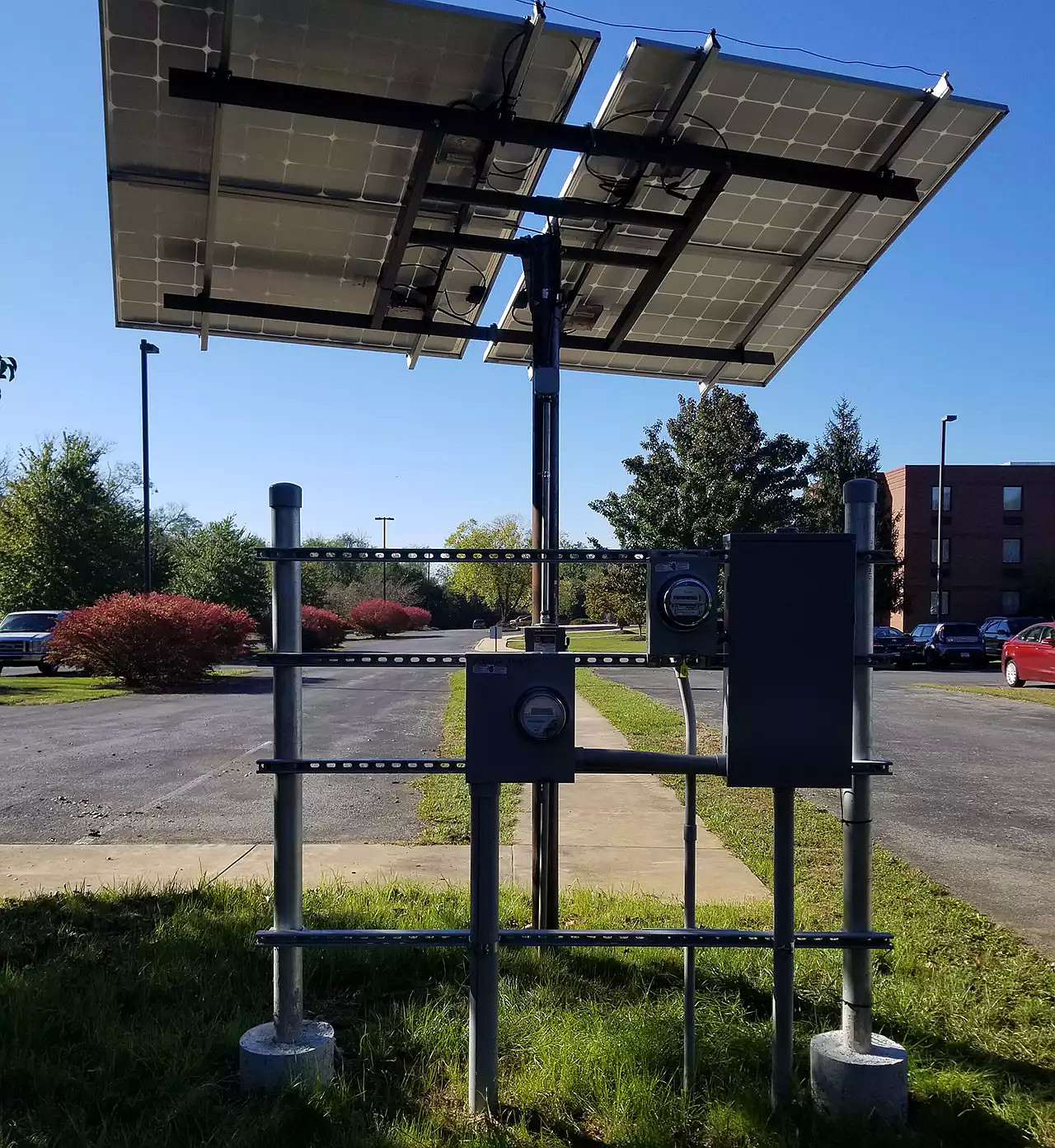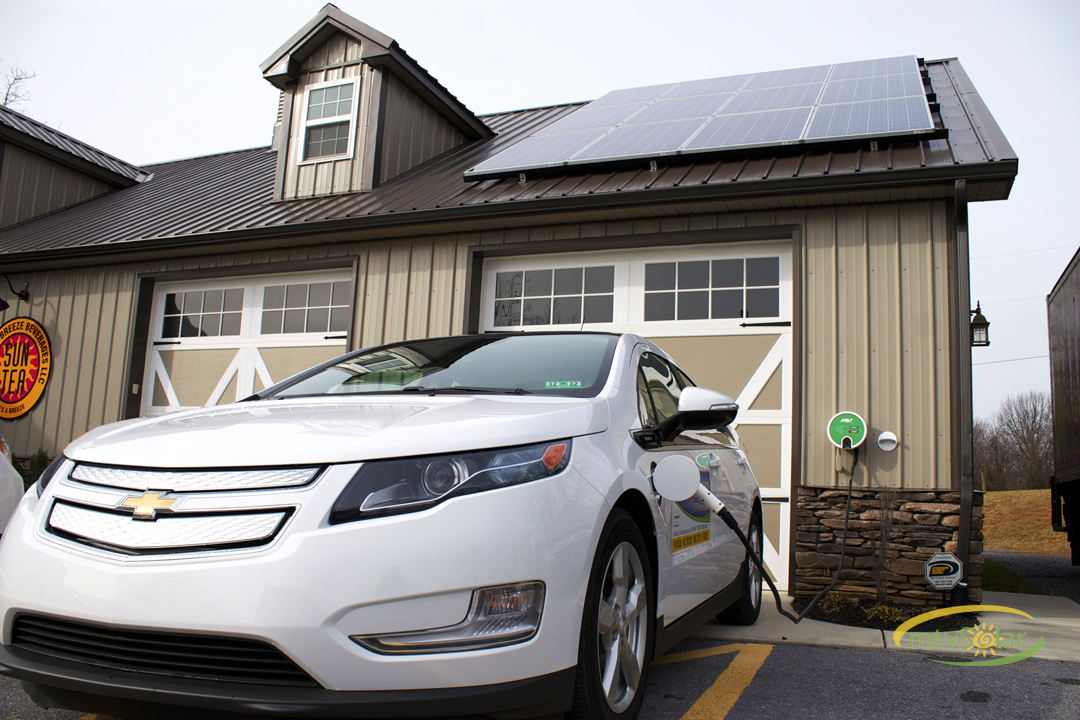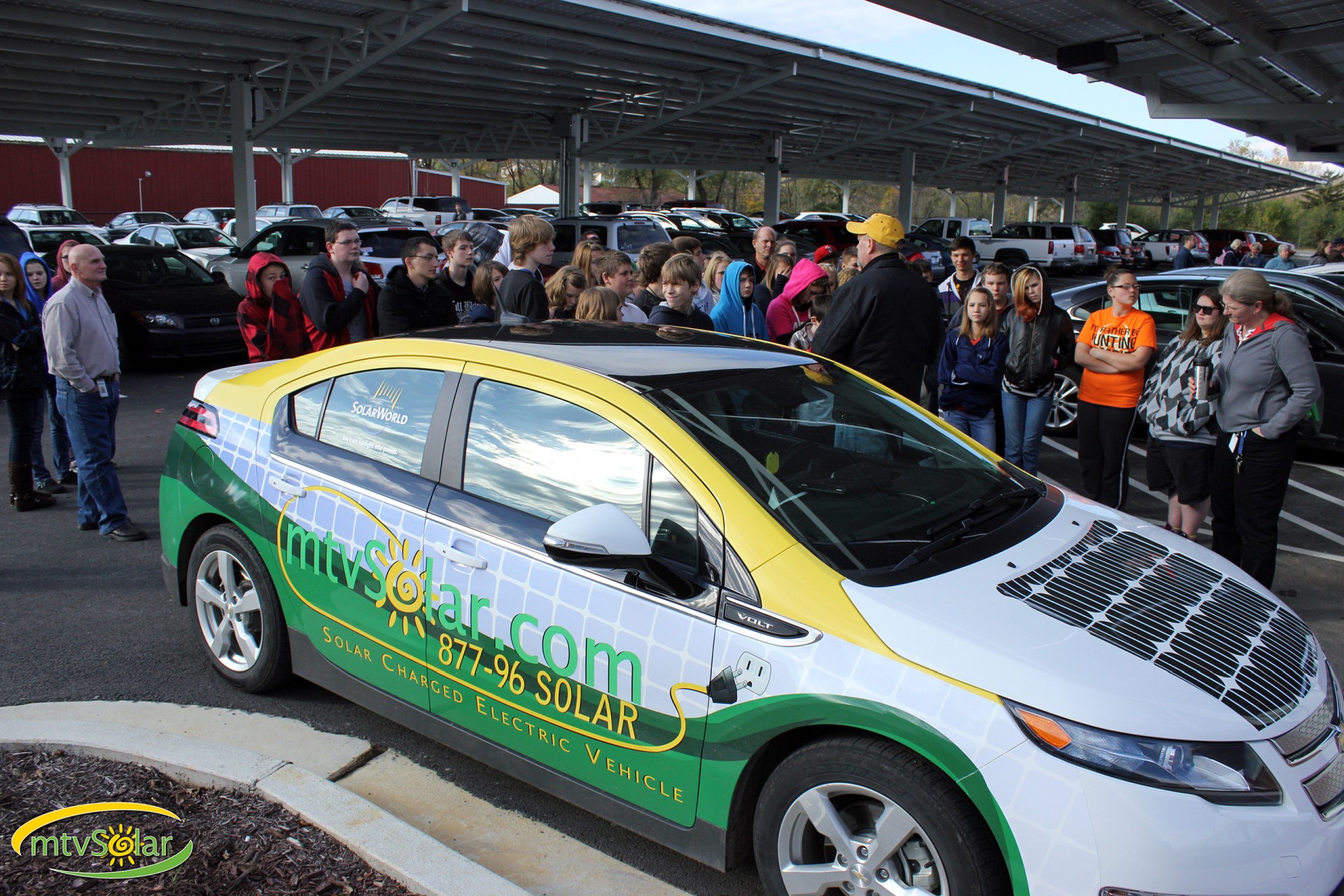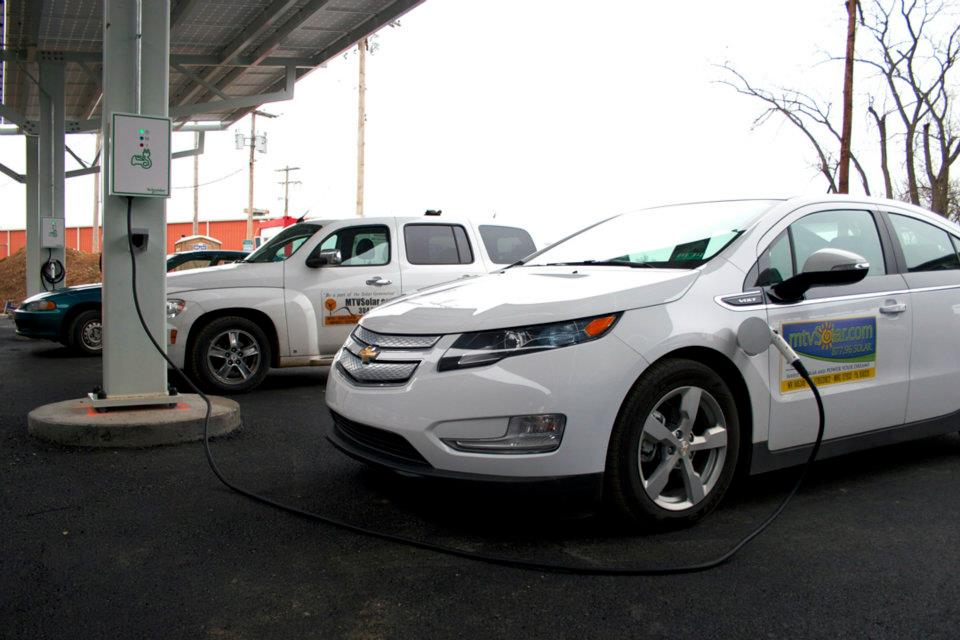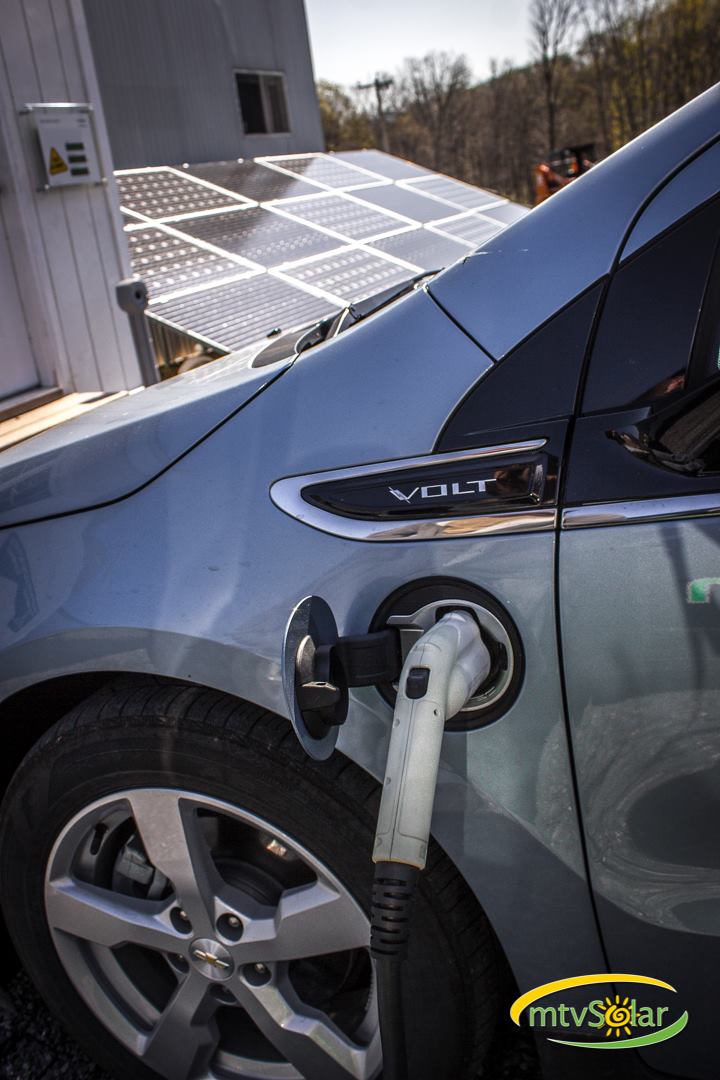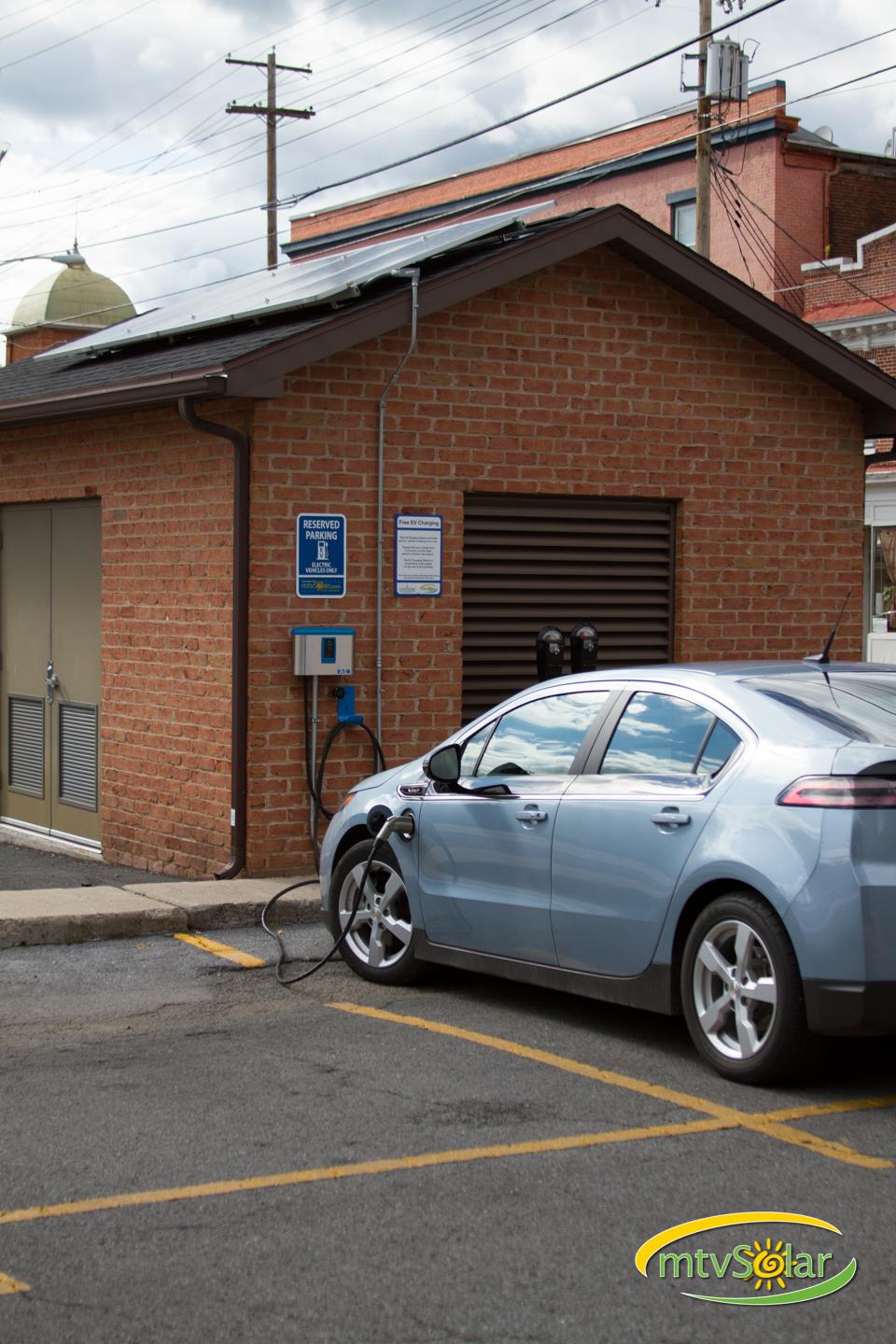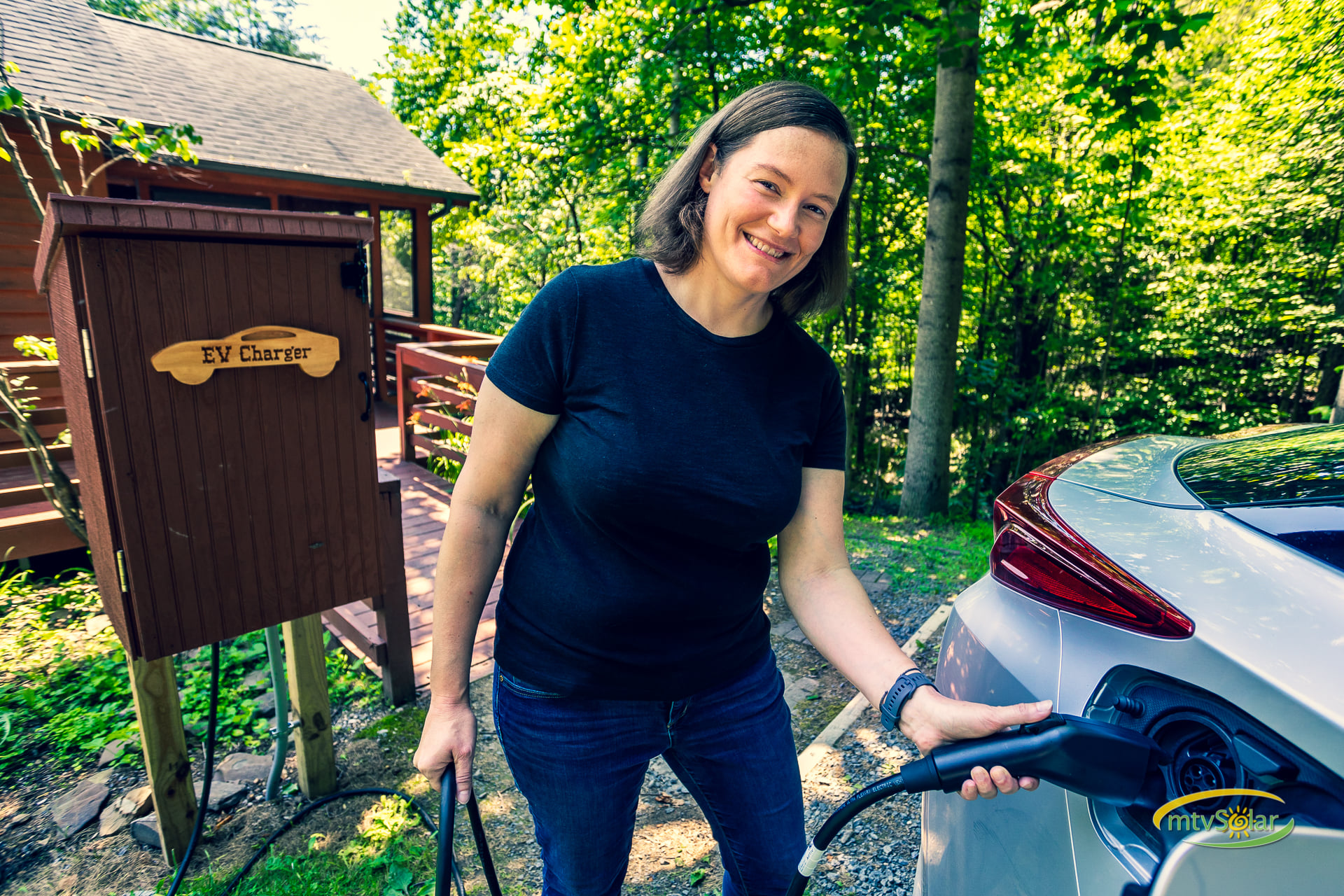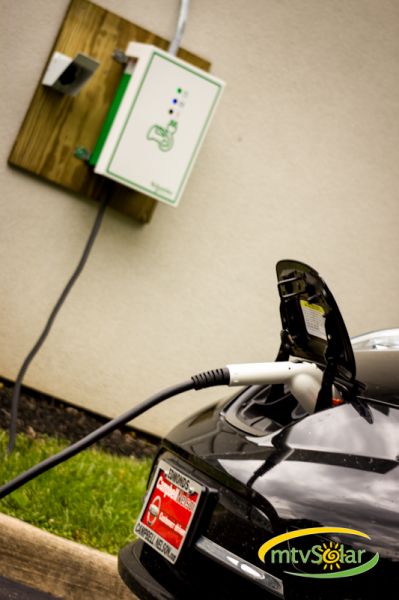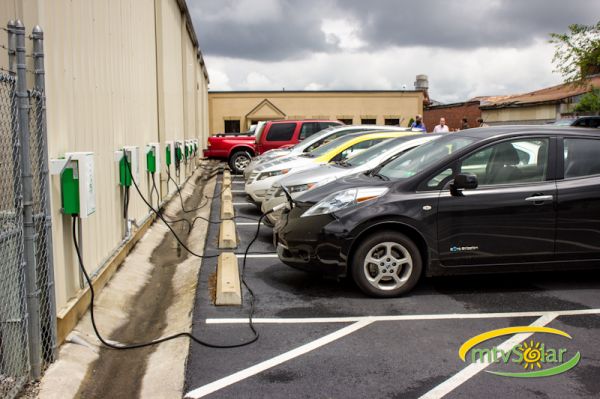Even during an outage!
With the meteoric rise in costs of gasoline being fueled by current world events, the time has never been better to consider a shift from fossil fuels to electricity for transportation.
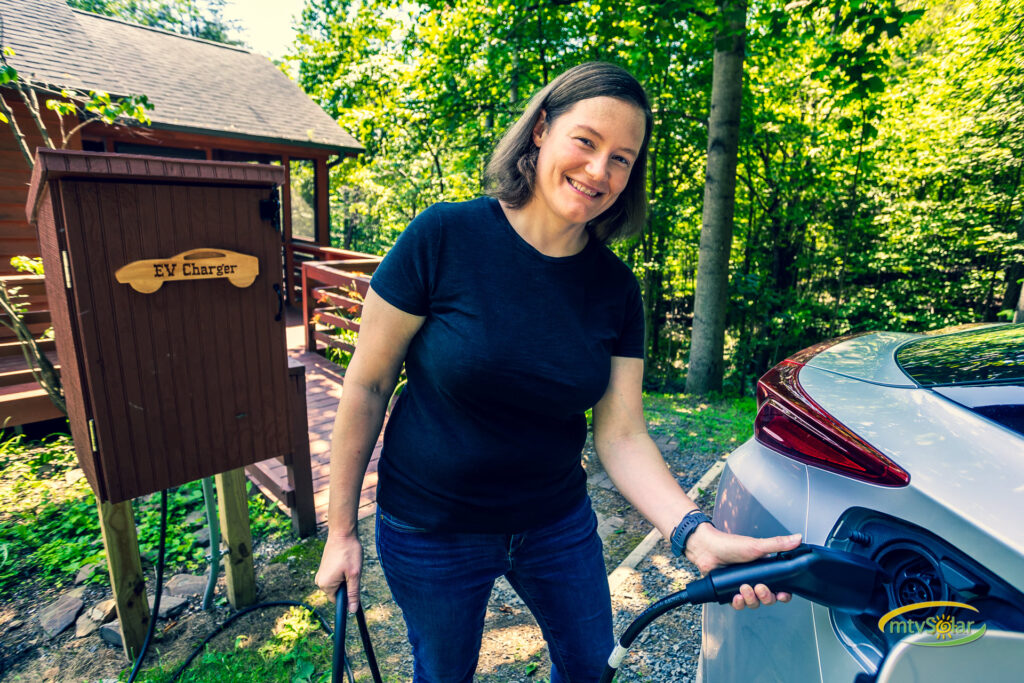
The popularity of electric cars has skyrocketed; news outlets love to track the rapid rise of Tesla and its luxury vehicles. In addition to purely electric cars, there are many varieties of plug-in hybrid cars that are reducing dependency on gasoline and diesel such as the Toyota Prius and Chevy Volt. Aside from Tesla, all major automobile manufacturers now have at least one electric vehicle offering to choose from, including sedans, SUVs and pickup trucks.
While it’s true that even coal-fired power plants generate power more efficiently than a single combustion engine, electric cars still rely on energy that produces greenhouse gasses in most areas. If you are powering your car via a home outlet rather than the gas pump, those watts still cost money, though much less per mile than traditional fuel would, and still cleaner than burning gasoline or diesel.
One of the ways to truly get the most sustainability and financial benefit from your electric car is to install a solar photovoltaic energy system on your home or office building alongside the EV (electric vehicle) chargers.
Powering an electric car with your home or office PV system will speed up the ROI, and projects to pay for itself within 7 to 10 years, according to EnergySage, despite the extra cost for solar panels. Given that mtvSolar’s quality solar panels will produce usable power for over 40 years, there will be many years in which this system is paid off and generating extra benefits.
As more electric cars are added to the roads, solar-powered electric car charging stations are cropping up, sometimes free for public use. Large businesses are adding EV chargers to encourage their employees to drive to work with an electric car. As these items grow more and more common, they further reduce the cost to an electric car owner. mtvSolar has installed a few such chargers around our service area.
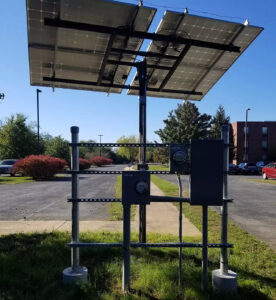
With a grid-tie system, even when not using all the electricity generated for the home and electric car, one can be putting energy back into the utility grid for others to use, adding to the savings. Net metering gives a special benefit to solar energy producers.
Generally speaking, one needs to charge their car after work, at night, when the sun is down. Even so, an electric car can be powered by the sun.
In West Virginia, Pennsylvania, Maryland, and Virginia, the laws are such that residents who produce solar power during the day at their homes can get back the excess during the night at a 1-to-1 ratio. “Net metering” refers to measuring how much energy left the grid and entered the grid from a particular home over the course of a month and finding the net change. This means a customer is only charged for the total extra energy pulled from the grid. In the event of overproduction, the owner is given an energy credit to be used later.
The bottom line is that even though the exact same electrons an array produced during the day aren’t the same ones charging the car at night, the utility acts like a giant battery, effectively storing the daytime solar energy for use at night.
When you upsize your solar capacity enough to accommodate one or two electric cars, you do incur additional costs, but you also cut the gasoline or public electric-charge costs, generating a steady stream of savings. Electric vehicles provide other benefits, including requiring much less maintenance, and solar energy systems also qualify for valuable tax credits that make your money back even faster.
A solar power system and an electric car are investments, but they are investments that compound the positive returns for each other. Let’s take a look at an example on how the typical American can gain vehicle energy independence.
On average, electric cars consume 34.6kWh to travel 100 miles, or 0.346kWh to travel 1 mile. The typical driver drives around 13,500 miles per year. The total kWh then needed to charge a commuter’s electric car is 4,671kWh annually based on that 34.6kWh per 100 miles average. A solar array of around 3.5kW will produce enough power to recharge the car for free over the course of a year. And since the quality solar modules installed by mtvSolar are warrantied for 25 years and expected to last decades longer, your clean energy source will outlive the life of the typical car a few times over.
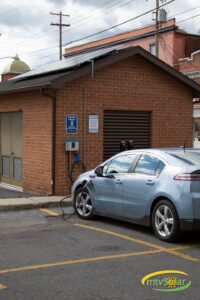
But what happens when the power goes out? Modern solar technologies such as SolarEdge EnergyHub or Tesla PowerWall can charge your car during an outage. The SolarEdge solution is the most leading edge of all current technologies, allowing direct conversion of solar energy to power for the car charger, without drawing down house batteries or being converted by the inverter. mtvSolar has extensive experience installing solar powered electric car chargers that can operate during an outage.
Maintenance costs on electric cars are minimal, with costs for oil changes, spark plugs, exhaust system, and fan belts non-existent. This means less money spent on maintenance, and also means less materials used in total to operate your car, furthering your reduction of your carbon footprint. Even brakes last much longer as modern electric cars use a system known as regenerative braking, feeding energy back into the battery each time you stop. And last, once the car battery packs are past their useful life, they can have a second life as stationary storage or be recycled. In fact, mtvSolar is installing systems right now that use recycled EV batteries for stationery purposes.
Want to know more about how to combine solar and an electric car charger? We install quality solar modules, car chargers, and home batteries regularly, using the safest technology on the market. Contact us today for a FREE consultation: https://mtvsolar.com/site-evaluation/
